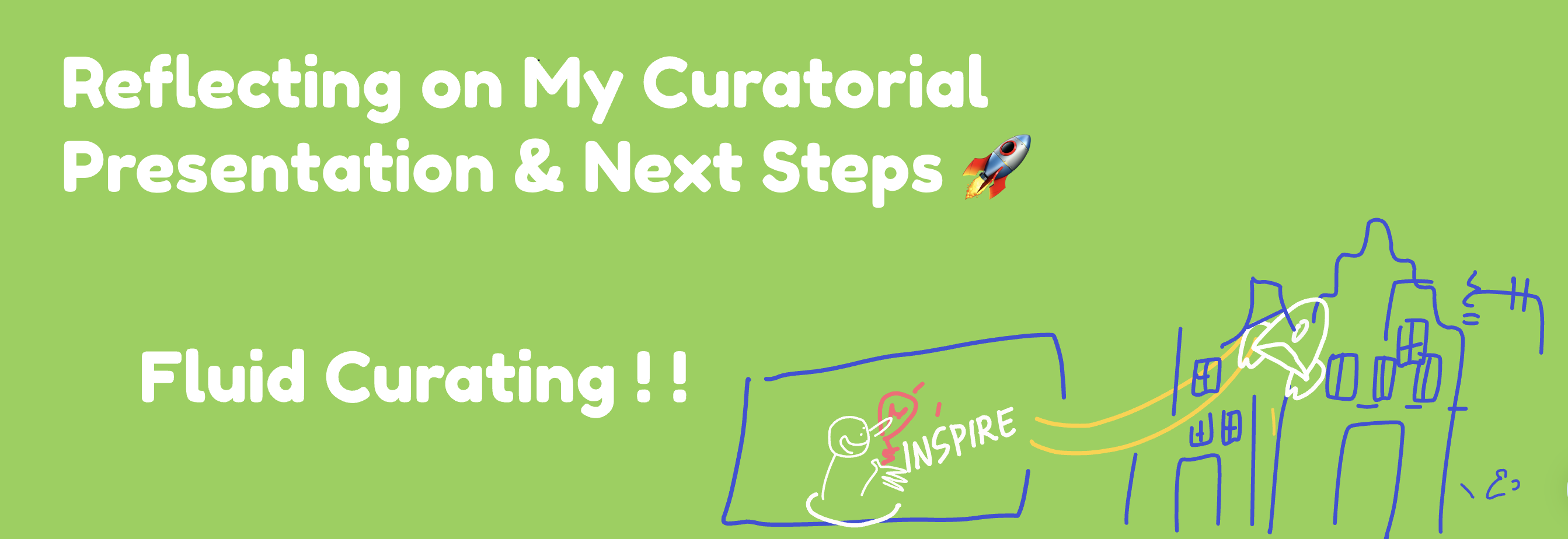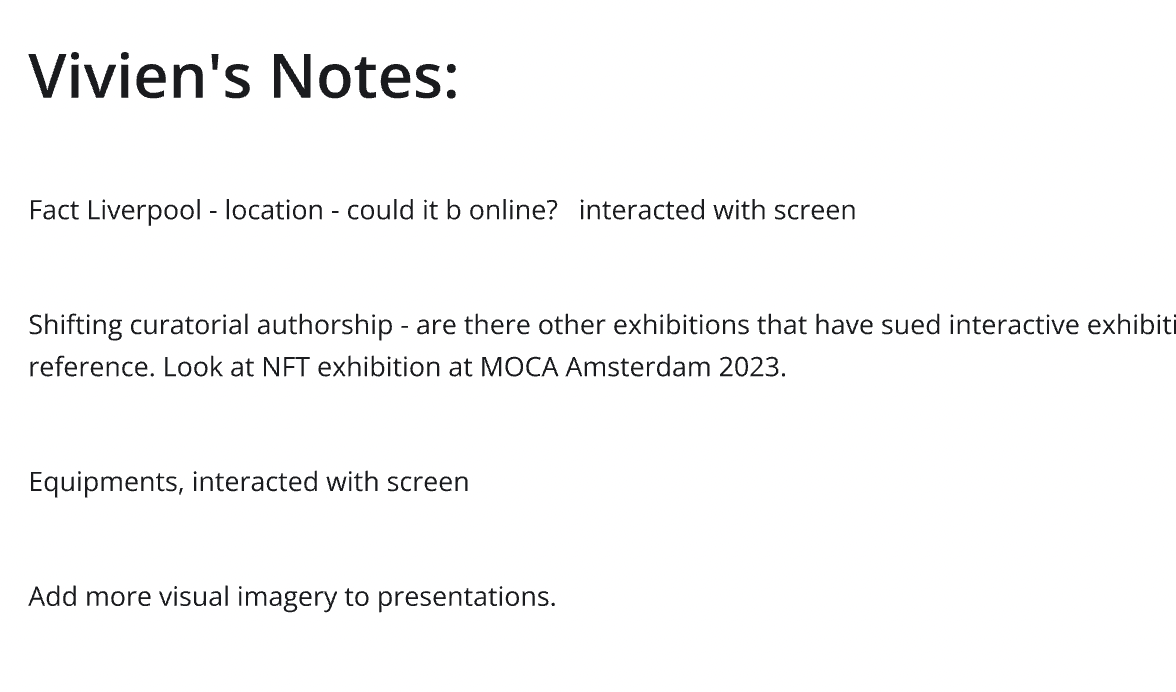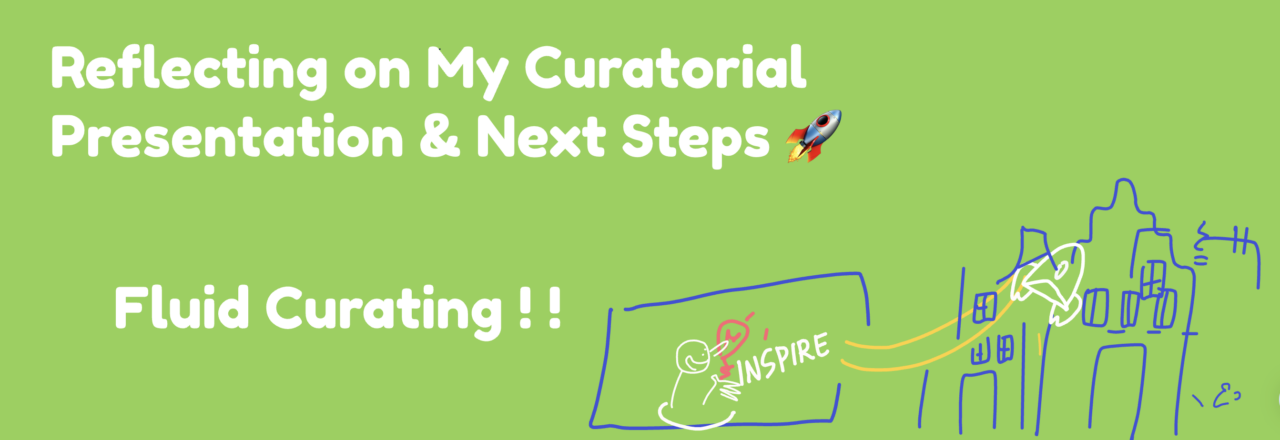 The past few weeks have been a whirlwind of ideas, refining concepts, and pushing my curatorial project, “Fluid Curating: Experimenting with Decentralized Art Ecologies and Archiving,” further. Last week, I finally presented my work to my peers and tutors, and it was a moment of clarity—exciting, challenging, and full of insights.
The past few weeks have been a whirlwind of ideas, refining concepts, and pushing my curatorial project, “Fluid Curating: Experimenting with Decentralized Art Ecologies and Archiving,” further. Last week, I finally presented my work to my peers and tutors, and it was a moment of clarity—exciting, challenging, and full of insights.
In this blog, I want to take a step back and reflect on what I presented, the feedback I received, and what’s next as I shape this project into something tangible.
Presenting “Fluid Curating”
My presentation centered on the idea that traditional exhibitions are too static—curators decide everything in advance, and audiences passively consume what’s on display. But what if exhibitions were fluid? What if they could evolve based on audience interaction, real-time AI insights, and blockchain participation?
The core of Fluid Curating is:
Decentralized decision-making – Artists, audiences, and algorithms all contribute.
Dynamic exhibitions – Layouts, text, and artworks shift in real-time.
Transparent archiving – Every change is recorded on the blockchain, creating an evolving, living archive.
A big question I posed in my presentation was:
“If an exhibition is always changing, how do we keep it conceptually coherent?”
This made me rethink the role of curatorial anchors—fixed thematic points that structure the exhibition, even as other elements change. Using AI-driven thematic mapping could be one way to ensure coherence while allowing flexibility.
Feedback & Key Insights
Getting feedback from my peers and tutors was incredibly valuable. They challenged me to refine my approach, think about real-world implementation, and sharpen my project’s focus.

1️⃣ Could “Fluid Curating” work as a hybrid online-offline model?
Insight: Instead of just being a physical exhibition, could there be a digital platform where people interact with the curation remotely?
Next Steps:
Look into NFT exhibitions like MOCA Amsterdam 2023 for hybrid models.
2️⃣ Who controls the curatorial decisions?
Insight: If everything is audience-driven, does the curator still have a role? Some feedback suggested that full decentralization might weaken curatorial structure.
Next Steps:
Research other exhibitions that balance participatory curation with curatorial guidance.
3️⃣ How does the tech actually work?
Insight: My project relies on interactive screens, AI-generated text, and blockchain voting—but how will people engage with these tools? The feedback highlighted the need for clearer descriptions of how the audience physically interacts with the exhibition.
Next Steps:
Identify the exact tech requirements (touchscreens, projection mapping, AR integration).
Study existing interactive exhibition interfaces for reference.
4️⃣ Making the presentation more visual
Insight: The feedback suggested adding more sketches, diagrams, and visual prototypes to help people understand how Fluid Curating functions in real time.
Next Steps:
Design mockups of the exhibition space showing audience interaction.
Create data visualizations that illustrate how AI and blockchain influence the curation process.
Fact Liverpool: Bringing the Project to a Real Space
One major takeaway from the feedback was the importance of site-specific testing. Since I’m considering FACT Liverpool as the exhibition venue, I need to visit and evaluate:
Can their digital infrastructure support interactive tech?
How does their audience engage with new media exhibitions?
Is their space flexible enough for a constantly evolving exhibition model?
Next Steps:
Plan a site visit to FACT Liverpool and assess feasibility.
Look at previous interactive exhibitions hosted at FACT for inspiration.



alewisj
Pitch Feedback
Your presentation was well organised and presented. This enabled you to get useful feedback form your peers. Consider referencing interactive exhibitions such as the NFT exhibition at MOCA Amsterdam (2023) to situate your project within a broader curatorial context. The concept of shifting curatorial authorship is particularly compelling—how does this project challenge traditional curatorial power structures?
Expanding the exhibition to an online format, similar to FACT Liverpool’s digital curatorial platform, could increase accessibility. If feasible, a site visit to FACT might provide insights into integrating interactive screens and audience participation. Lastly, incorporating more images of the artists’ works would strengthen the visual impact of your presentation.
It is imprinted that the execution of your ideas and the equipment you need to do is realistic. This will be evidenced by you providing costs within your budget. You have selected artist that illustrate your idea well. However, including more images of artist work and digital mock-ups of your installation plans will always provide useful visual communication of your ideas.
A challenge of interactive exhibitions is that fact you will need the audience to participate, how can you encourage them to do so? Would the exhibition still work if the audience doesn’t interact with the works or the concept? And if not, could you find ways that the exhibition could work if this is the case?
Blog Feedback
You have a very nice personal approach to writing your blog, which makes it relatable and enjoyable to read. You still manage to express how you are working within the collective and how the collective’s ideologies are growing. Through your engagement in collaborative workshops and planning meetings, you are developing your own understanding of what curating means to you. It is good that you have clearly set out your intentions for developing your project. I hope you post the outcome of this research in future blog posts. For example, if you intend to read a book, select and analyse relevant quotes to provide evidence that you understand these theories and can relate them back to your own projects.
It is good that you have found your presentation of your work to your peers and tutors exciting, challenging and full of insights. Hopefully, this clarity will help you develop your speculative project. With more questions and feedback, you are able to refine your unique curatorial approach. It is important that you can communicate your ideas of “fluid curating” in a clear way so that the audience can understand what you mean. Your critical thinking is evidenced by the questions you ask yourself. It appears the feedback has enabled you to improve your speculative project. You have identified useful “next steps” and ways to execute them. I believe if done correctly, your speculative project will improve further.